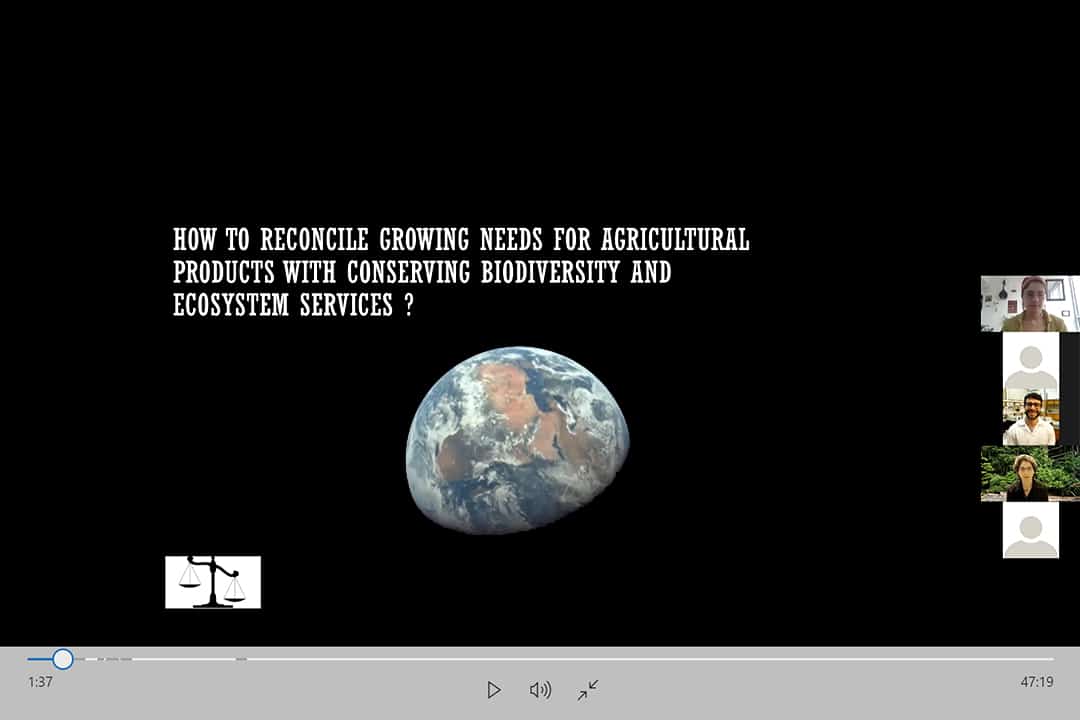On March 18, the New Frontiers Seminar Series (NFSS), hosted by the Graduate Students’ Association at UTSC, held a talk on how agricultural landscapes could be redesigned to help regenerate biodiversity and vital ecological processes.
The talk was presented by Claire Kremen, a conservation biologist and 2007 MacArthur Genius Grant fellow who is currently the president’s excellence chair in biodiversity at the University of British Columbia.
At the start of her talk, Kremen stressed the abundant shortcomings of the current global food systems in promoting health of both individuals and the environment. We see large amounts of hunger, which affects as many as 800 million people in the world, but we also produce far more than we currently need.
Agriculture and food production are some of the main contributors to the biodiversity crisis that the global community faces with their immense water usage, habitat destruction, and emission of greenhouse gases.
What should we change?
Kremen highlighted a paradox that exists in farmland management. She pointed out that, while farmlands currently have a detrimental effect on biodiversity, biodiversity actually has a small but noticeable positive output on agriculture. Using that knowledge, we must focus on changing the negative effect of farmland management to a more positive one, which would result in better agriculture, biodiversity, and sustainability.
Three key opportunities were highlighted during the talk, ranging from smaller tweaks to the farmland systems to full transformations of how things are done.
The first of these is ‘ecological intensification,’ which focuses on enhancing crop yields while reducing inputs. Some important practices highlighted that support ecological intensification include hedgerows and flower strips, which prevent farm runoffs and attract beneficial insects.
A second tweak that she suggested is implementing the use of diversified farming systems, which focus on methods and tools that can harness ecological diversity at a plot or landscape scale. Practices that improve this include polycultures, which grow more than one crop species at a time to imitate natural biodiversity and continuously replenish the soil.
The final solution Kremen pointed out is ‘agroecological transformation,’ which tries to improve the social systems that produce agriculture in addition to improving farming practices themselves. So this transformation considers “not only practices and the science of agroecology, but also the social movements” that contribute to a more sustainable agriculture industry and promote farmer agency.
Benefits of these practices
During the talk, Kremen spoke about some cases and tests that labs had run using various tweaks and transformations to see whether they had significant benefits.
One case that her lab carried out was growing hedgerows at the edges of Californian crop fields. The team discovered that not only was there a massive reduction in the pollution caused by the fields, but there was also a significant increase in the biodiversity of bees and birds.
This increase in biodiversity also led to an increase in profits, as the bees increased pollination while birds acted as natural pesticides. Accordingly, farmers no longer had to buy pesticides and other forms of pest control.
South American silvopastures showed similar results. By integrating crops with forage plants for livestock, the pastures not only experienced an increase in yields, but they were able to survive and keep producing during droughts and heat spikes, which conventional fields were unable to do.
Overall, the data collected from these cases and many others have shown that modifying agricultural practices to support biodiversity is a major benefit to crop yields and stability, as well as other environmental factors.


